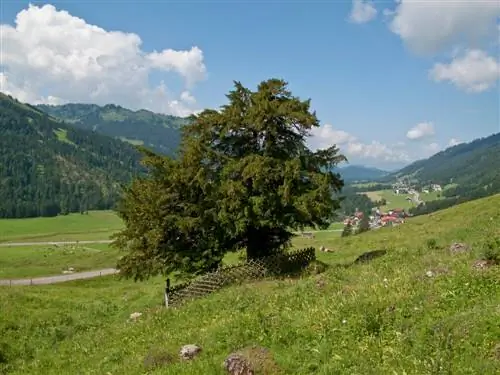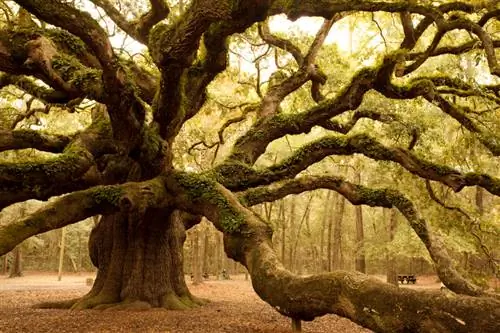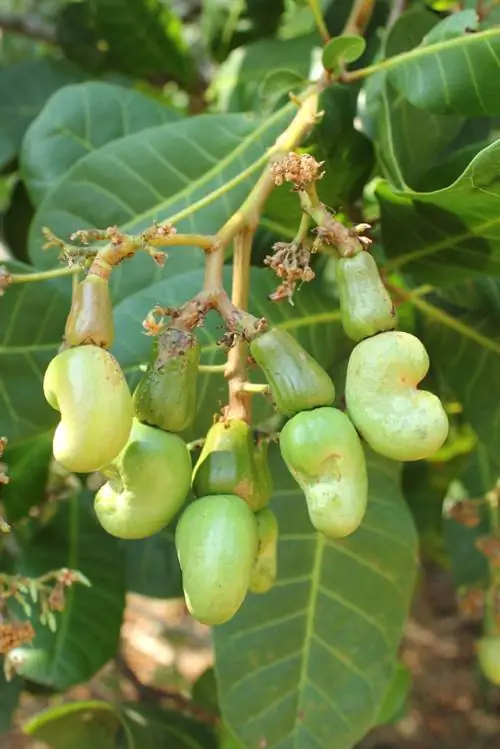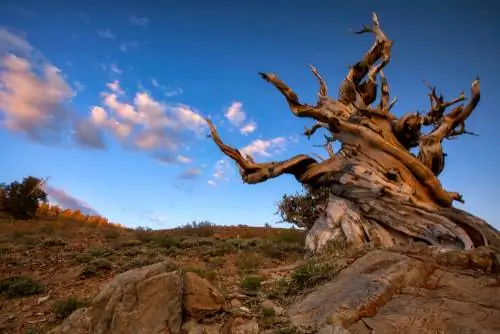- Author admin [email protected].
- Public 2023-12-16 16:46.
- Last modified 2025-01-23 11:22.
The European yew (Taxus baccata) was once widespread throughout Europe, but is now threatened with extinction. Our ancestors viewed the yew as a mystical tree. The lifespan may also play a role, as yew trees can live for more than 1000 years.
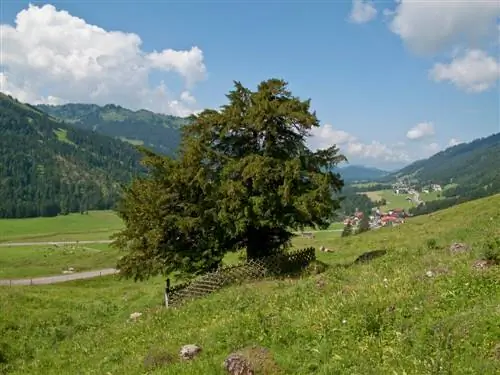
Where is the oldest yew tree in the world?
The oldest yew tree in the world is the Fortingall Yew in Scotland, which is estimated to be around 2,000 years old. This also makes it the oldest tree in Europe, although other such old yews probably exist, but in limited numbers.
Where is the oldest yew tree in the world?
There are some yew trees in Europe that are estimated to be at least 1,500 years old. Some estimates even speak of 2000 to 4000 years. Since determining the age of yew trees is so difficult, such information should be treated with caution.
The so-called Fortingall Yew, which is located in a Scottish churchyard, is probably the oldest yew in the world. The age of this specimen is estimated to be around 2,000 years, which also makes the yew the oldest tree in Europe. There are probably other yew trees of this age, although their number is likely to be very limited.
Which is the oldest yew tree in Germany?
The “Old Yew of Balderschwang” in the Allgäu is the oldest yew in Germany. There are very different ages for this specimen, ranging between 800 and even 4000 years. However, an age between 800 and 1500 years is considered realistic, which still makes the tree probably the oldest tree in Germany. This would make the Balderschwanger yew even older than the various “1000-year-old” oaks and linden trees that can be found everywhere. Today the tree stands as a solitary tree, but once probably grew within a dense forest that was cut down in the Middle Ages.
Why is it so difficult to determine the age of a yew tree?
Typical of old yew trees is the hollow trunk inside, as the wood rots over time. It is therefore not possible to count the annual rings to determine the age, which is why tree researchers have to rely on estimates based on the circumference of the trunk and the height of the tree. However, these can only be very rough estimates, as the height and thickness growth of the trees can fluctuate greatly due to environmental influences. A comparatively small and narrow tree can therefore be older than a particularly impressive specimen if the site conditions differ significantly.
Why is the yew tree threatened with extinction?
In the Middle Ages, yew trees were increasingly cut down in many regions of Europe, so that by the end of the 16th century not a single specimen could be found in Bavaria. The wood, which was both hard and elastic, was particularly sought after for the construction of weapons (e.g. longbows) and musical instruments. In addition, the highly poisonous tree was often cut down to protect animals (e.g. horses, cattle, pigs, etc.) from fatal poisoning. For this reason, ancient yew trees are amazing for two reasons: they survived clear-cutting and were able to live to an unusually old age.
Tip
Yew trees are suitable as hedges
From around the 18th century, yew trees were often planted in gardens and parks as a design element - for example as a hedge or topiary. The conifer is extremely cut-tolerant and provides excellent privacy protection.

